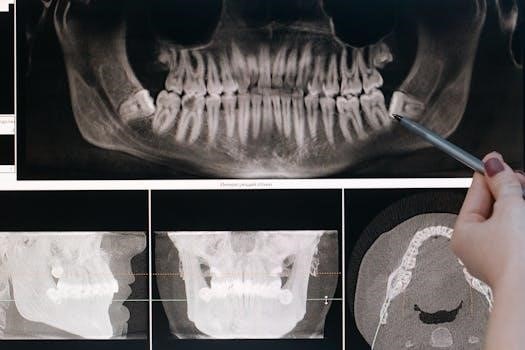Form 5471 Schedule O⁚ An Overview
Schedule O of Form 5471 is a vital component for reporting the organization or reorganization of a foreign corporation. It also includes the acquisition or disposition of its stock. This schedule is crucial for U.S. persons involved with specific foreign entities.
Purpose of Schedule O
The primary purpose of Schedule O, within the context of Form 5471, is to meticulously document and report significant events related to a foreign corporation. This includes instances of the foreign corporation’s organization or any subsequent reorganization. Additionally, Schedule O is designed to capture crucial details regarding the acquisition or disposition of the foreign corporation’s stock. It serves as a formal record of these transactions. This ensures transparency and compliance with U.S. tax regulations concerning foreign corporations. This detailed reporting is essential for the IRS to monitor and assess the tax implications of such activities. Without Schedule O, the IRS would lack a complete picture of ownership changes and structural shifts within these foreign entities. It also provides a clear trail of the transactions; This helps to ensure accurate tax calculation. The information provided is important for tax compliance and enforcement.
Reporting Organization and Reorganization
Schedule O mandates the reporting of details surrounding the initial organization of a foreign corporation and any subsequent reorganizations. This involves providing specifics on how the corporation was established, including the date of formation and the jurisdiction under which it was organized. Furthermore, if the corporation undergoes any significant restructuring, such as mergers, divisions, or changes in its legal structure, all relevant details must be reported. This includes the effective date of the reorganization and a description of the changes made. The purpose of this reporting is to maintain an accurate record of the corporation’s structural history and to ensure that any tax implications resulting from these changes are properly addressed. These filings also allow for a comprehensive understanding of the evolution of the foreign corporation’s structure. This assists in identifying any possible tax liabilities or avoidance.
Reporting Stock Acquisitions and Dispositions
Schedule O also necessitates reporting all stock acquisitions and dispositions related to a foreign corporation. This includes any purchase or sale of shares, as well as transfers, redemptions, or other transactions that alter ownership. For each transaction, filers must provide the date, the number of shares involved, and the consideration paid or received. Details on the parties involved in the transaction must also be included to establish the transfer of ownership. Moreover, the schedule requires reporting of the method used to determine the stock’s value. This meticulous documentation of stock transactions ensures that any gains or losses from these transactions are accurately reported for tax purposes. It is an integral part of maintaining a transparent record of changes in ownership within the foreign corporation.

Who Must File Schedule O?
U.S. persons who are officers, directors, or shareholders in certain foreign corporations must file Schedule O. This includes those who have acquired or disposed of stock during the year.
U.S. Persons Involved in Foreign Corporations
Schedule O of Form 5471 is primarily aimed at U.S. individuals and entities that have a significant relationship with certain foreign corporations. This encompasses U.S. citizens, residents, and domestic corporations who are considered to be officers, directors, or shareholders of these foreign entities. The key factor determining the need to file Schedule O is the level of control or ownership in the foreign corporation and the nature of transactions. Specifically, if a U.S. person has an interest in a foreign corporation and has engaged in activities such as the organization, reorganization, acquisition or disposition of stock, they are likely required to file Schedule O. This requirement ensures transparency regarding U.S. individuals’ involvement with foreign businesses. The filing obligation applies to those who meet specific ownership thresholds or have certain roles within the foreign corporation, as detailed by IRS guidelines, and have engaged in transactions requiring reporting on Schedule O.
Categories of Filers
Form 5471, which includes Schedule O, identifies four distinct categories of U.S. persons who must file based on their relationship to the foreign corporation. These categories range from shareholders who acquire or dispose of stock to those who are officers or directors of the foreign entity. The specific category a filer belongs to determines the level of information they must provide on Schedule O and other parts of Form 5471. For instance, a category 5 filer, may have more extensive reporting requirements compared to a category 1 filer. Understanding the filer category is essential for accurately completing the form. Correctly determining this category ensures the proper disclosure of required financial and ownership information. The IRS provides detailed guidelines for each category, outlining specific filing obligations related to Schedule O and Form 5471.
Shareholder Reporting Requirements
Shareholders of foreign corporations have specific reporting duties when it comes to Schedule O of Form 5471. These requirements often hinge on the level of ownership and the specific transactions involving the corporation’s stock. If a U.S. person acquires or disposes of a certain percentage of stock, or if they own a specified percentage of the corporation’s stock, they may need to file Schedule O. This includes reporting the date of the transaction, the amount of stock involved, and the consideration paid or received. Shareholders must also report any reorganizations that affect their ownership in the foreign entity. Detailed records of all stock transactions are important, as this information is necessary for correctly filling out Schedule O. Failure to comply with these requirements can result in penalties.

Key Information on Schedule O
Schedule O is divided into parts. Part I focuses on details of the organization or reorganization of the foreign corporation. Part II covers stock transactions, including acquisitions and dispositions. It is crucial to accurately report the dollar basis of stock.
Part I⁚ Organization or Reorganization Details
Part I of Schedule O is specifically designed to capture comprehensive details regarding the organization or any subsequent reorganization of a foreign corporation. This section requires filers to provide a detailed account of the circumstances surrounding the formation or restructuring of the entity. It includes the date of organization or reorganization, the method used to organize or reorganize the corporation, and the jurisdiction under which the entity was formed. Furthermore, filers must report any changes in the corporate structure or its legal standing. This information is critical for the IRS to track the evolution of the foreign corporation and assess its impact on U.S. tax liabilities. Accurate completion of this section is vital to maintain compliance with reporting requirements. This section is paramount in establishing a clear timeline and understanding of the foreign corporation’s operational history. This ensures transparency and helps to avoid any potential discrepancies.
Part II⁚ Stock Transactions
Part II of Schedule O is dedicated to reporting all stock transactions involving the foreign corporation. This includes both acquisitions and dispositions of stock during the tax year. The filer must detail the date of each transaction, the number of shares involved, and the consideration paid or received. It’s essential to specify the type of stock being transacted, whether common or preferred, and the class of stock, if applicable. Additionally, the filer needs to report the name and address of the person from whom the stock was acquired or to whom it was transferred. This section also requires disclosure of the method used to determine the stock’s value. This meticulous approach ensures that all stock-related movements are transparently reported. This information is crucial for the IRS to understand changes in ownership and control of the foreign corporation. Accurate reporting of these transactions helps to avoid potential penalties and complications. This section is fundamental to maintaining full compliance.
Dollar Basis Reporting
Schedule O requires reporting the dollar basis of stock acquired or disposed of in the foreign corporation. This involves determining the original cost of the stock in U.S. dollars. For acquisitions, this means converting the purchase price into dollars. For dispositions, the dollar basis is needed to calculate any gain or loss. If the stock was acquired through means other than a direct purchase, such as a contribution or reorganization, the dollar basis needs to be established using specific rules. This may involve fair market value assessments. Proper documentation is critical to support the reported dollar basis. It is crucial to report the correct basis for accurate tax calculations. This ensures compliance and helps to avoid potential audit issues with the IRS. The dollar basis is a key component for determining tax liabilities. Understanding these rules is vital for complete and accurate reporting in Schedule O, which is essential for U.S. tax compliance.

Additional Aspects of Form 5471 and Schedule O
Form 5471 and Schedule O have several additional important aspects. These include the reference ID number of the foreign corporation, its relationship with other schedules and penalties for non-compliance which are key to understand.
Reference ID Number of Foreign Corporation
When completing Form 5471 and Schedule O, it’s crucial to understand the significance of the reference ID number for the foreign corporation. This unique identifier is used to track and distinguish the specific foreign entity being reported. The reference ID number is essential for the IRS to accurately process the information. It ensures that all data related to a particular foreign corporation is correctly associated within the IRS systems. In cases where a foreign corporation has undergone a reorganization, the previous reference ID numbers might need to be included. This helps in establishing a clear audit trail of the entity’s history. The reference ID number links the current reporting period with any past filings. This is important to ensure the IRS has a full picture of the entity’s activity. The accurate reporting of this number prevents errors and delays in processing the form. It also helps avoid potential penalties due to reporting discrepancies. This identifier facilitates the proper handling of tax liabilities related to the foreign corporation. The reference ID number ensures compliance with tax regulations. This also ensures a smooth review of the information by the IRS.

Relationship with Other Form 5471 Schedules
Schedule O of Form 5471 doesn’t operate in isolation; it’s intricately linked with other schedules within the form. Understanding these relationships is essential for accurate reporting. Schedule O often connects with Schedule J, M, and other schedules that detail the financial and operational aspects of the foreign corporation. Data reported on Schedule O, regarding stock acquisitions or reorganizations, can impact information reported elsewhere. This includes financial statements on other schedules. For instance, the information about changes in ownership may affect calculations or reporting on Schedule C, E, or F related to earnings and profits. If there’s a reorganization reported on Schedule O, this could be linked to changes in the corporate structure reported in other schedules. It is crucial to ensure consistency across all schedules. This involves ensuring that data aligns with information reported on Schedule Q, for example, which details the foreign corporation’s information. The information in the various schedules should create a cohesive picture of the foreign corporation’s activities. This relationship is essential for the IRS to properly assess the tax implications. Any discrepancies can trigger scrutiny, making accurate and consistent reporting a top priority. The schedules should be completed in conjunction to ensure clarity.
Penalties for Non-Compliance
Non-compliance with Form 5471, including Schedule O, can lead to significant penalties. Failure to file the form or report all required information, including data on Schedule O relating to reorganizations or stock transactions, can trigger substantial financial penalties. Specifically, a penalty of $10,000 can be imposed for each failure to file or report required information. This penalty applies to each instance of non-compliance for each applicable foreign corporation. Additionally, if non-compliance continues after the IRS notifies the taxpayer, further penalties may apply. These can escalate over time, increasing the financial burden on the filer. Penalties aren’t just limited to monetary fines; non-compliance can also lead to increased scrutiny from the IRS, potentially triggering audits. This could result in additional tax liabilities and further penalties. It’s crucial to adhere to all reporting requirements and ensure the accuracy of the information reported on Schedule O and other relevant schedules. Therefore, understanding the penalties for not complying with the rules should be a priority for all those who are required to file Form 5471 and its schedules. These penalties are put in place to encourage compliance.










